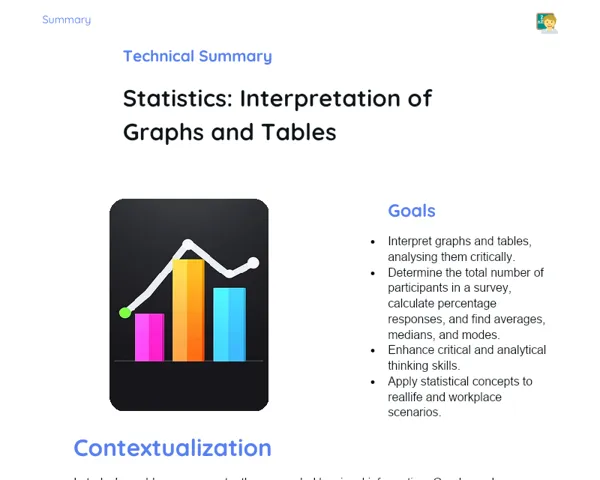Goals
1. Grasp the concept of a cofactor matrix.
2. Calculate the cofactor matrix from a given matrix.
3. Utilise the cofactor matrix to compute the inverse matrix.
Contextualization
Matrices are key mathematical tools that pop up in various real-world applications. From digital image processing to modelling intricate economic systems, a solid grasp of matrix operations is essential. The inverse matrix, in particular, plays a critical role in solving linear systems and reversing linear transformations. For instance, in engineering, the inverse matrix helps solve systems of equations that represent structural challenges and electrical circuits. In data science, it's crucial for managing large datasets and applying regression techniques.
Subject Relevance
To Remember!
Cofactor Matrix
The cofactor matrix is created by taking the cofactors of each element from a given matrix. Each cofactor is derived by omitting the respective row and column of the element in question and calculating the determinant of this smaller matrix, applying an alternating sign depending on the element’s position.
-
The cofactor matrix is essential for calculating the inverse matrix.
-
Each element of the cofactor matrix is the determinant of a smaller submatrix, multiplied by an alternating sign.
-
The cofactor matrix is employed in various linear transformations and advanced calculations across different fields.
Inverse Matrix
The inverse matrix of a square matrix is another matrix such that when it’s multiplied by the original matrix, it yields the identity matrix. Matrix inversion is a key process in various mathematical and real-world applications, like solving linear equation systems.
-
The inverse matrix is crucial for resolving systems of linear equations.
-
Not all matrices have inverses; only square matrices with a non-zero determinant are invertible.
-
The inverse matrix is extensively used in computer graphics algorithms and numerical methods.
Determinant
The determinant is a scalar value computed from a square matrix that provides essential information about the matrix, such as its invertibility and the volume of the linear transformation it represents.
-
The determinant is used to verify whether a matrix can be inverted.
-
A determinant of zero means that the matrix is non-invertible.
-
Calculating the determinant is a crucial step in determining the inverse matrix.
Practical Applications
-
In engineering, the inverse matrix is used to solve systems of equations that model structural challenges and electrical circuits.
-
In data science, the inverse matrix is vital for handling sizeable datasets and applying regression techniques.
-
In computer graphics, the inverse matrix is employed for image transformations and animations, like rotation and scaling.
Key Terms
-
Cofactor Matrix: A matrix consisting of the cofactors from a given matrix, used for calculating the inverse matrix.
-
Inverse Matrix: A matrix that, when multiplied with the original, results in the identity matrix.
-
Determinant: Scalar value that indicates whether a matrix is invertible and provides insights into the linear transformation represented by the matrix.
Questions for Reflections
-
How can a solid understanding of the inverse matrix assist in solving complex problems in your future career?
-
In what scenarios is matrix manipulation utilized across various sectors of the job market?
-
Why is mastering the techniques for calculating the cofactor matrix and the inverse matrix important for your academic and professional development?
Practical Challenge: Calculating the Inverse of a Matrix
In this mini-challenge, you'll put your understanding of the cofactor matrix and the inverse matrix to work by addressing a practical problem.
Instructions
-
Form a group of 3 to 4 classmates.
-
Collect the 3x3 matrix given by the instructor.
-
Calculate the cofactor matrix from the given matrix.
-
Find the transpose of the cofactor matrix.
-
Determine the determinant of the original matrix.
-
Multiply the transpose of the cofactor matrix by the inverse of the determinant of the original matrix to derive the inverse matrix.
-
Prepare a brief 5-minute presentation explaining the process and outcomes.



